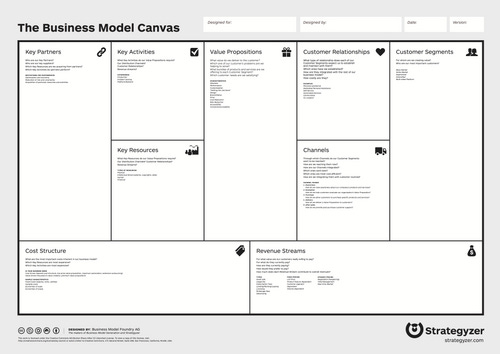Design doesn’t have a value problem. It has a translation problem
Insights from top design leaders about the current design market
“Executives speak metric, so that’s how you get through to them.” A Director of UX told me when I asked a common question many designers have:
“How should designers show their value to businesses?”
I’ve been talking with design leaders recently about an upcoming white paper on design and metrics, and I wanted to give a little preview of one of the things I’ve learned.
In this “Year of Efficiency” (as one design lead put it), businesses are looking at designers and wondering what value they bring beyond visuals. Many designers aren’t quite sure how to answer this question.
After all, they hand off their project to a developer or client and move to the next project without finding out the final result.
What do we do in these situations?
Show that you’re listening in meetings (with AI)
This is one of those things that used to be much harder but has become much easier with AI. Why?
AI meeting summaries are incredibly valuable for determining business objectives. Previously, you had to be on your toes at every meeting to see glimpses of business impact.
Your Product Manager might have a slide or two based on metrics or objectives at the beginning of a presentation.
Or they’d casually say, “This project’s about increasing the LTV (Lifetime Value) of Users” before moving on to another topic.
If you missed that? You’d have to either re-review footage (if you were lucky), or you wouldn’t know. However, AI meeting summaries have changed that.
Microsoft Co-pilot (which interfaces with Teams) is one of the biggest examples. Along with Otter.ai and other AI notetakers, they are your ticket to making this easier.
However, if you’re doing in-person meetings, you’ll have to do it the old-fashioned way. The idea is simple: jot down meeting notes, especially paying attention to what the decision-makers say.
Ideally, you’d have some time in the meeting to ask follow-up questions, like “What is our current Lifetime Value, and what’s our target Lifetime Value we’re hoping to hit?”
However, if that’s not always possible, simply documenting what was said, from your point of view, is one of the quickest and easiest ways to show value.
Why? It gives a new person’s perspective on overall business goals and can often start valuable conversations.
When you say, “This is what I heard and understood from my point of view,” leaders might discover that they’ve ventured too far off-topic because you think this is a project about “Getting new users” when it’s really about “retaining current subscriptions.”
It might also spark valuable conversations about how to prioritize a huge objective, like redesigning the new user experience into a smaller project.
These sorts of questions not only showcase your curiosity outside the field of design but also show that you want to make a difference.
One tool, suggested by a principal design consultant, is the Business Model Canvas.
Simply trying to fill this out doesn’t just show that you’re interested in design. It shows that you want to understand the bigger business impact.
The other thing to be aware of is the need to ‘ladder’ your impact.
Ladder up your metrics.
Ideally, you would hear the business metrics directly from your leaders in these meetings.
However, that may not always be the case, especially if you’re trying to revise an old project for your portfolio. In that case, one of the most effective things to do is “ladder up” from your design impact.
The idea is simple: you might have some impact, but it’s not in the format your business needs.
For example, your re-design increased the “task completion rate” by 40%. That’s a pretty significant impact, but trying to explain that to executives will not work.
Why? Because they don’t know what that means. But if you explain your impact on business outcomes? They’ll be able to understand.
Why? Because they care about business objectives, not user outcomes. So, one way of ‘laddering up’ is to use the five whys method to consider the larger impact.
For example:
Why does “increased task completion rate” matter? If it’s for our onboarding task, that means ‘more users convert,’ which means that our ‘conversion rate’ goes up (Product Metric)
Why does “Increased Conversion rate” Matter? If users paid to sign up, that directly translates into Increased Revenue (Business metric)
The laddering-up technique might help you establish why your design impact matters, but then comes the big question: “How can I talk about a percentage increase?”
Request and escalate data
If design wants to show value, they need access to the metrics that matter.
After all, one of the easiest (and most effective) ways to demonstrate your value as a designer is to do a “before-and-after.”
Many designers create visual “Before and After” images that show the old design and the improvements side by side.
So, it's nice to say that you “Increased Conversion rate,” but it's nicer to say that you increased it by “30%.”
To do that, you need to ask either for access to metrics. However, you must also ensure that your argument is ‘laddered up’ to showcase the benefit of getting access.
After all, it will help your design portfolio, but businesses must also benefit from these actions. Here are some examples of how you might argue that:
I want my designs to align with actual product goals to complete design projects faster (and avoid extra iterations)
I want to improve collaboration by showcasing how the decisions we make on the design side can help businesses reach their objectives
I want to identify pain points and opportunities that we can use to improve customer-facing metrics
etc.
One design lead even mentions escalating to leadership if problems arise due to the impact that metrics can have.
However, if you’re getting shut down for some reason, there is another approach you can take: the query.
Rather than asking for a license to Analytics software, you might make a detailed request of someone that is a much easier ask.
If each license of analytics costs $50,000 and your business doesn’t want to give it to you, what you might ask is:
“Hey, I’d like to see the impact of my design changes around X. Can you send me Weekly Active User numbers from June and July, so I can see our release's impact?”
These questions are easy for many audiences (like Data Scientists, Product Managers, and Business Analysts) to dig up, and if you ask this enough times, they might finally cave and give you a license.
This is how you show your impact as a designer
Metrics and design value are more critical than ever
We are currently in, as one Design Manager put it, “the Year of Design Efficiency”.
Businesses no longer pay hundreds of thousands of dollars for pixel pushers alone unless you are in the top 3% of all designers worldwide.
So, one of the best ways to showcase your design value is to talk about your impact on the bottom line.
But doing this isn’t selfish: it’s a way of building relationships with your team. By showing that you’re curious about things other than pixels, and ‘breaking the design silo’, you not only begin to see the impact of your work.
You can form better relationships with stakeholders who might not have ‘gotten’ what design does outside of visuals.
Building these relationships isn’t just better for your design projects: they’re necessary to build trust and advance your design career.
But you don’t need to be a smooth talker or an extrovert to have that impact.
All you need to do is to speak the language that everyone else is.
Kai Wong is a Senior Product Designer and Data and Design newsletter writer. He teaches a course, The Strategic Designer: How to Use Data to Get a Seat at the Strategy Table, that helps designers communicate their value and get buy-in for ideas.






What you are describing is UX evolving into the role of Product Designer and the tools we use.